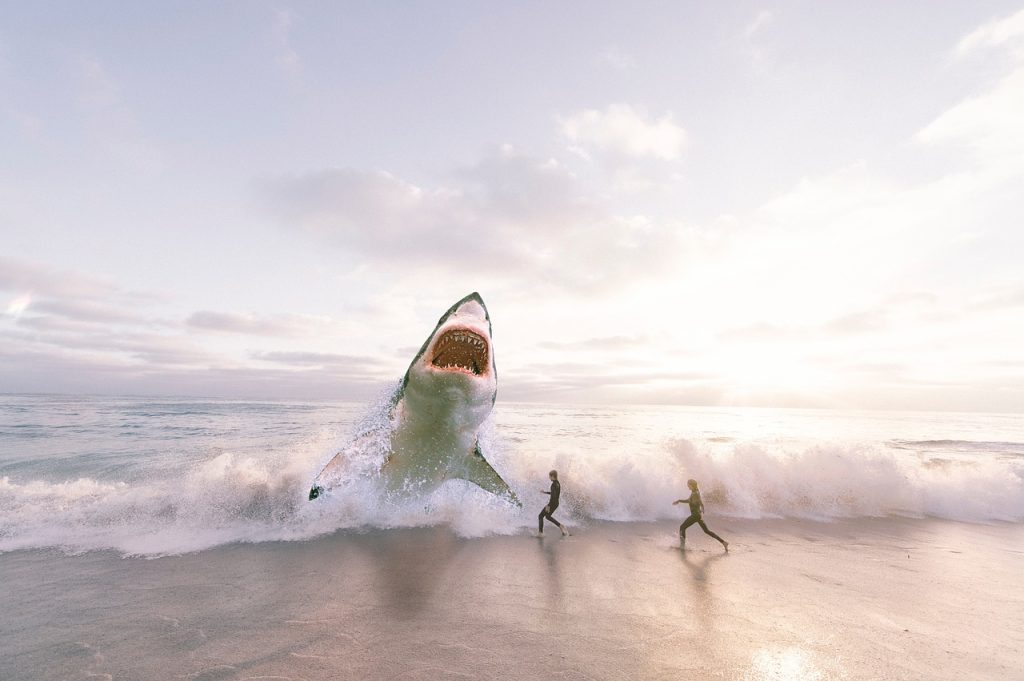
Among the marine creatures that haunt the depths of the oceans, sharks hold a fearsome place. However, some species have stood out for their exceptional aggression and ability to impose themselves as the “ultimate predators.” One of the most striking examples is the infamous “killer shark” or “great white shark.”
The Great White Shark: Myth and Reality
The great white shark (Carcharodon carcharias) is often at the center of killer shark stories, mainly due to its reputation as a formidable predator and its exposure in popular culture, especially with the film “Jaws”. This shark, which can sometimes reach over 6 meters in length, is equipped with a powerful jaw full of sharp teeth, capable of biting with a force of several tons per square centimeter.
Contrary to popular belief, shark attacks on humans are rare. However, their ability to detect blood and their rapid attacks have made them feared creatures. This predator typically hunts seals, fish, and even other sharks, but occasionally, it mistakes a swimmer for its usual prey.
Legendary Attacks
Shark attack stories have fueled maritime legends for centuries. One of the most famous stories is about the tragic events of Jersey Shore in 1916, where a series of attacks resulted in multiple casualties, causing panic among vacationers and forever influencing the image of sharks in the collective imagination.
Other notorious incidents include attacks in unexpected areas, such as the coasts of California or Australia, where surfers are sometimes mistaken for seals. These events fuel fear while amplifying the myths surrounding these creatures.
A Predator in Danger
Despite their image as “killers,” great white sharks are now considered a vulnerable species. Overfishing, habitat destruction, and shark nets placed on some beaches have drastically reduced their population. Ironically, this supreme predator, which inspires so much fear, is now in danger of extinction.
Conservation efforts are underway to protect these majestic creatures, often misunderstood. Scientists are working to change attitudes by emphasizing that sharks, far from being killing machines, play a crucial role in the ocean ecosystem by regulating the food chain.
The Reality Behind the Myth
“Killer shark” stories are often exaggerated by the media and films, but the reality is much more nuanced. The great white shark remains a fascinating, complex animal, vital to the balance of marine life. As conservation efforts increase, it is crucial to understand that while attacks may be dramatic, they represent only a small part of their natural behavior.
Thus, the killer shark is not just a ruthless predator but a species in danger, essential to the preservation of our oceans.

